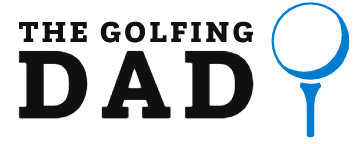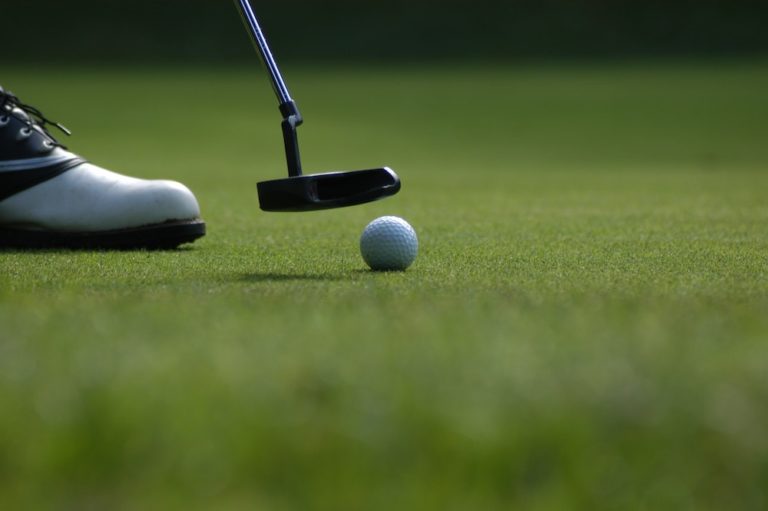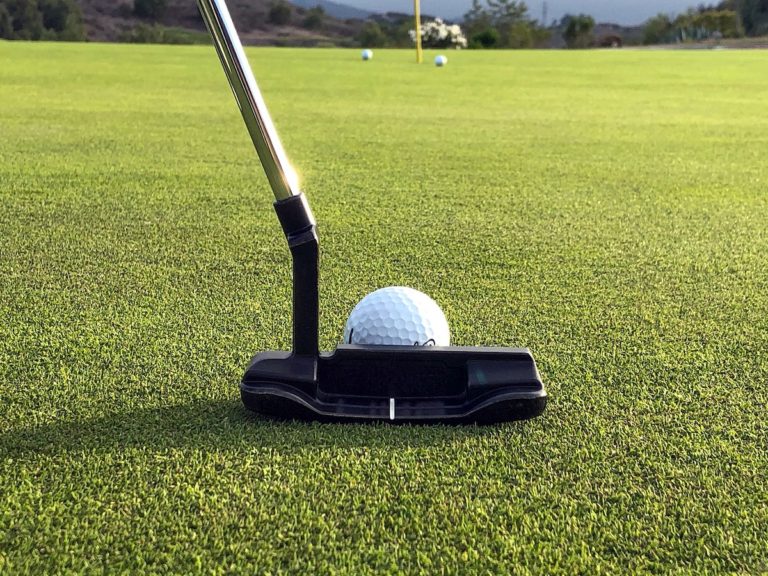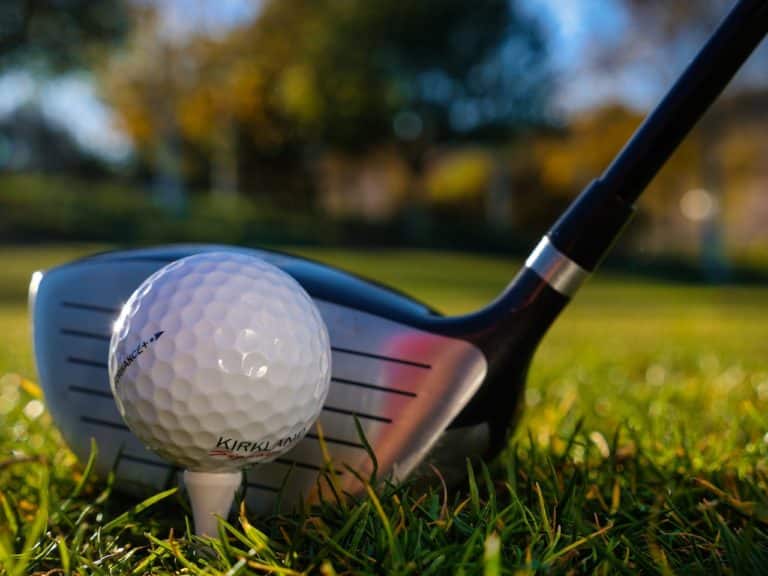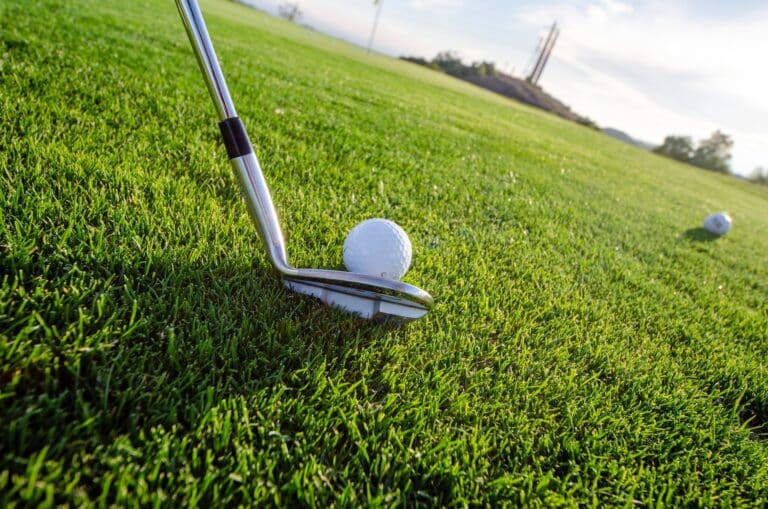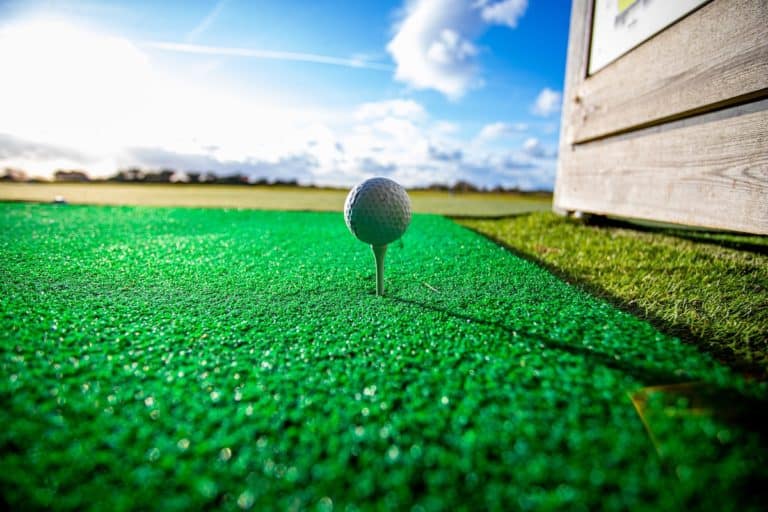Imagine standing on the tee box, envisioning the perfect shot that gracefully curves through the air, effortlessly bypassing hazards, and landing right where you want it to.
Hitting a draw in golf is like wielding a secret weapon, a skill that can transform your game and leave your playing partners in awe.
But how do you master the art of shaping the golf ball and making it dance down the fairway in a gentle yet controlled draw?
In this article, we’ll discuss why hitting a draw shot is so great and give you tips on how to hit a draw in golf on demand.
What is a Draw?
A draw shot in golf is a specific type of ball flight that starts right of the target for right-handed players (or to the left for left-handed players) and gently curves back to the left (or right for left-handers), finishing on target.
The draw is a highly sought-after shot in golf due to its potential to increase distance and its ability to navigate the course strategically. It’s a skill that takes practice to perfect, but once mastered, it can significantly enhance your game.
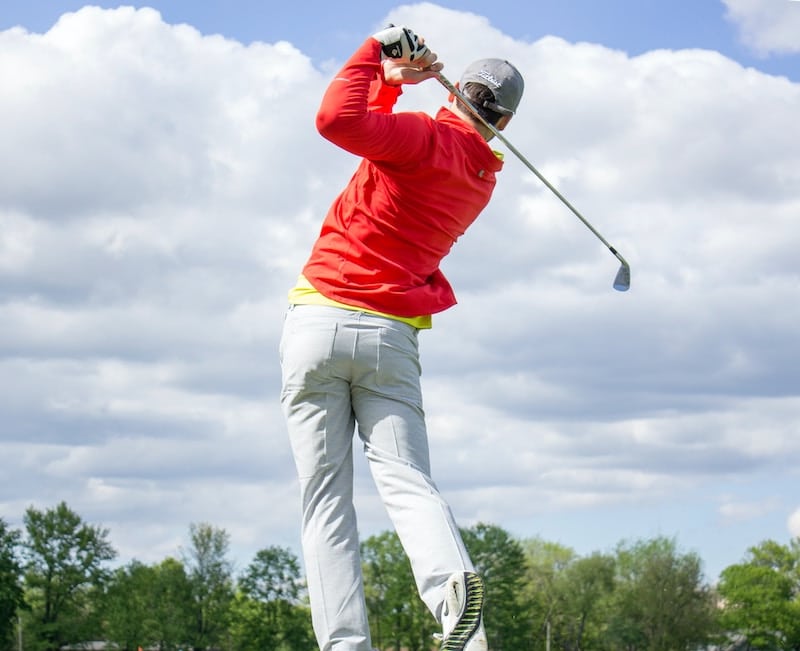
What’s So Great About Hitting a Draw?
Hitting a draw shot holds several advantages that can help golfers improve their game. A draw typically provides more distance than a straight shot. This is because the spin on a draw shot reduces air resistance, allowing the ball to roll further upon landing.
Plus, the ability to hit a draw can give a golfer more options in navigating the course. For instance, if the hole is set behind a group of trees, a well-executed draw can curve around the obstacles and get you closer to the green.
Finally, executing a draw requires precision and control, and consistently hitting a draw is often seen as a sign of a skilled golfer. The added distance and course management benefits make the draw a desirable shot for many golfers.
How to Hit a Draw in Golf
Are you ready to add the draw shot to your golf game? Here are some tips to help you hit a draw with ease.
Align Your Shoulders To The Right
Correct shoulder alignment is critical if you want to hit a draw. For a right-handed player, the shoulders should be aligned slightly to the right of the target line at setup. This alignment encourages an inside out swing path, which is essential for producing the right-to-left ball flight.
The exact shoulder alignment will vary depending on the golfer, but a good rule of thumb is to ensure your lead shoulder is lower than your trailing shoulder at the point of impact. Remember, the subtle yet significant adjustment in shoulder alignment can significantly influence the shot’s outcomes, aiding you in achieving the desired draw ball flight.
Strengthen Your Grip
Having a strong grip is another vital component in hitting a successful draw. The term ‘strong grip’ in golf does not refer to how tightly you hold the club but rather the positioning of your hands on the club.
A strong grip promotes a greater degree of rotation in the club face, which is essential for generating the right-to-left ball flight of a draw. For a right-handed golfer, this means rotating your hands slightly to the right on the golf grip so that more knuckles are visible on the left hand when you look down at address.
This grip encourages a closed club face in relation to the swing path during the downswing, causing a right-to-left spin on the ball and producing the desired draw. It’s crucial to practice this grip consistently to develop a feel for it, as too strong a grip can lead to a hook, while too weak a grip may result in hitting a slice.
Shift Your Hips Towards The Target
In the quest to perfect your draw, paying attention to your hip movement is crucial. As you initiate your downswing, the hips should shift towards your target. This promotes a more inside-to-out swing path, which is key to hit a draw.
Not only does this movement allow your weight to transfer smoothly from your back foot to your front foot, but it also maintains the club on the correct path for longer, enabling it to come into contact with the ball at just the right angle.
Remember, the goal is not a drastic or forced hip movement, but rather a natural, flowing motion that works in harmony with the rest of your swing. By effectively shifting your hips towards your target, you’ll be better equipped to shape your shots and consistently hit a draw.
Rotate Your Trail Arm Over Your Lead Arm
Rotating your trail arm over your lead arm during the downswing is a key factor in achieving a successful draw. This rotation allows the club face to close appropriately relative to the swing path. The rotation also ensures that the club face is square or slightly closed at impact, a crucial aspect for hitting a draw.
Without this trail arm rotation, the club face may remain open, leading to a fade or a push. Practice this rotation to find the right timing, as too early or too late a rotation can impact the ball flight.
Head to The Driving Range and Practice
Once you’ve familiarized yourself with these techniques and have begun to incorporate them into your golf swing, it’s time to head to the driving range. Practice is a crucial component in mastering the draw in golf.
Remember, understanding the mechanics of the shot is just the first step; the key to success lies in the consistent repetition of these steps. As with any skill, the more time you spend practicing, the more natural it will feel.
How to Hit a Low Draw
Hitting a low draw can be a game-changer in tight situations on the golf course. This shot combines the right-to-left ball flight of a regular draw with a lower trajectory, making it perfect for staying under the wind or navigating through low-hanging branches.
Here are some techniques to help you execute a low draw successfully.
Adjust Your Ball Position
The first step to hitting a low draw is to adjust your ball position. By positioning the ball slightly back in your stance (towards your trailing foot), you lower the ball’s flight. This is because it allows the club to make contact with the ball earlier in the downswing when the clubface is still de-lofted.
Lean the Shaft Forward
Another integral aspect of hitting a low draw is to lean the shaft forward at address. This means the grip end of the club should be slightly ahead of the ball at setup. This forward lean effectively reduces the club’s loft at impact, which lowers the ball’s flight without altering the swing.
Swing More Around Your Body
Last but not least, to curve the ball from right to left (for a right-handed player), you’ll want to swing more around your body. This creates a shallow swing plane and encourages an inside-to-outside swing path, which is just what you need to impart the right-to-left spin for a draw.
Practice these techniques at the driving range until you feel comfortable enough to use them on the course. With patience and persistence, you’ll be able to hit a low draw precisely when you need it, improving your versatility and performance on the golf course.
The Bottom Line
Mastering the art of the draw is a testament to a golfer’s technical prowess and understanding of the game’s nuances. By incorporating these techniques into your golfing routine, you are not only enhancing your skill set but also your adaptability on the golf course.
Remember that patience and consistent practice are the keys to mastering these shots. As you continue to improve, you’ll find these techniques integral to your game, offering you a wide array of strategies to overcome various course challenges.
Sean’s parents first put a golf club in his hands at the age of 8. He immediately fell in love with the game of golf. Today he’s passing on that love to his own kids.
